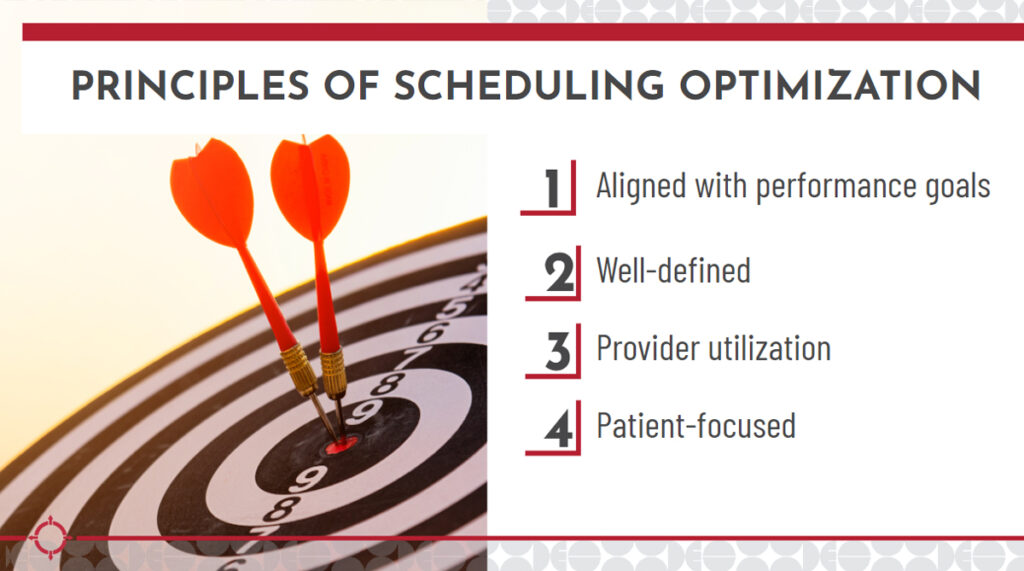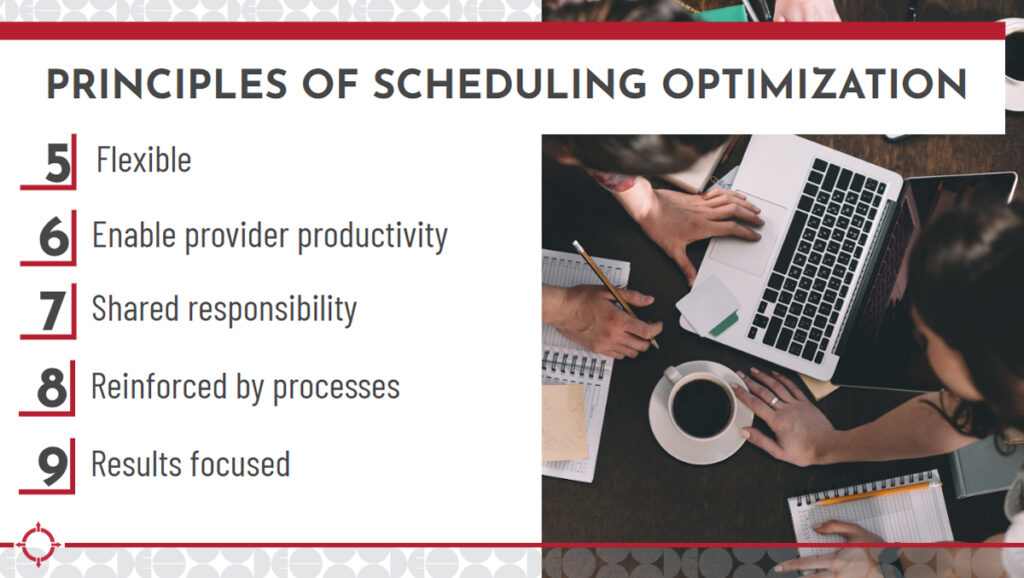How to address the critical parts of your workflow and get the most out of your team’s schedule.
Everyone has a busy schedule, right? The obvious challenge with a packed schedule is that things can slip through the cracks – it starts with harmless things like administrative duties and phone calls, but it will eventually bleed into other areas of your dental practice. Without a structure in place, the critical parts of your workflow (like billing or even some elements of patient care) can be negatively impacted. This is why your practice needs a schedule optimization tool that will fit the needs of your organization.
It’s probably impossible to create a system that would support or serve every single need – with all the different numbers of offices, the different types of clinical care provided, and the different types of specialty, it isn’t realistic to say that there is a one-size-fits-all solution. Our scheduling optimization tool may not be a perfect fit for your practice, but it can provide you with some principles and guidelines that can help you to think through your own systems.
If you don’t have a dialed-in system for optimizing your schedule every day to make sure that everyone is on the same page, you are missing a huge opportunity. Is there anything more upsetting to operators than when something is not executed well? Is there anything more exciting for operators than when something is built to last and constructed well? At the end of the day, it’s all about building the right system for you and distributing it to your team.
From here, we’re going to take you through some of our principles for building an optimized schedule for your practice. This material is designed to help you think about how you can better approach your scheduling processes, giving you a deeper insight into what an optimized schedule should look like while auditing what you already have in place.
Setting up expectations
First and foremost, your scheduling processes need to align with the performance goals of your practice. Setting reasonable, actionable expectations for your organization is the best way to align the different team members and schedules of your organization to a common goal. Your team needs to know what they are trying to accomplish, and what needs to be adjusted to help them get there. Standardization and consistency will be your allies here, allowing you to project your goals clearly and easily achieve those goals later in the year. You need consistency to help your team deliver on a day-to-day basis.
Another component of establishing clear expectations is showing what a well-defined schedule is supposed to look like for your organization. You might have a rockstar scheduler who can make sure everything looks good for all the doctors in your office, but what happens when that person gets sick, takes time off, or just quits? A scalable system is one that can be taught to new employees, especially those who are new to the dental industry. You need a tool that can take the institutional knowledge of your best team members and give it to other people, allowing them to step confidently into their new roles.

Patient-focused and provider agnostic
Any good system in the healthcare or dental space needs to be patient-focused and provider agnostic.
Let’s break those ideas down, starting with the focus on the patients.
The patient experience should be the top priority for any dental practice. If your patient experience is lacking in any way, the patients will find somewhere else to go. Any scheduling issues that affect patients could leave them sitting in chairs for hours at a time waiting for the doctor to come in. How is this acceptable?
Patients want to minimize the amount of time that they spend in dental offices. We have to recognize that we aren’t the highlight of their day and respect their limited time. There is a balance to having multiple patients going at once, but it shouldn’t come at the cost of the patient experience. Snafus happen occasionally, of course. From there, it’s all about communicating to the patient that they may have a longer wait than usual, but you can work to make their time spent waiting more comfortable.
A good schedule optimization process should be able to effectively manage the schedule of any provider, no matter the workload or specialty. Finding a provider agnostic system is key to managing the dynamic and changing schedules of the different providers within your organization. There are plenty of different perspectives on this, as many people operate in environments where everyone fits into the same provider structure – in situations like this, there are often time limits set for each procedure.
This is great for consistency, but it doesn’t help providers or patients when they are regimented to certain time frames. With a little more flexibility and consideration for the providers that may not work as fast as others, you can implement a schedule that allows providers to operate within parameters that they are comfortable with.

Leveraging flexibility
Flexibility is an underrated core value that needs to be leveraged in many areas of the dental industry, but especially when it comes to building schedules. It’s easy to be proud of building perfect schedules that optimize your workflows and improve efficiency within your organization – but what happens when it (inevitably) fails? At some point, a stumbling block will cause your perfectly arranged schedule to break apart, and you need to be prepared for when that happens. What would happen if the potential for catastrophe was built into your existing schedules?
What if, instead of panicking every single time that something goes wrong with the schedules, you build in some processes to overcome situations like this? It’s easy enough to come up with hypotheticals – broken equipment, patients cancelling appointments, staff needing sick days, etc. There are an endless number of reasons why something would go wrong, which means that you should be ever more vigilant to ensure that you are prepared for any potential situation.
When you can build some flexibility into your schedules, you are giving your team the grace to make a mistake. For example, let’s say your team has scheduled your providers to their capacity, filling all the chairs and appointment slots for the day – and a chair breaks. So now you are one chair down, with a full schedule of patients coming in for treatment. Because you haven’t allowed for flexibility within your schedule, your team has to scramble to make sure that all of the patients are taken care of, or your front desk will have to reschedule some appointments. Neither of these solutions are ideal. Plan for the worst-case scenarios, even if they seem unlikely.
Share the responsibility
Part of the big opportunity that comes with optimizing your scheduling process is that this is a team effort. Every day during your team huddle, your team needs to examine what is and isn’t happening in the office. Hygienists should be looking at their schedule to see if there are potential spots or openings in the schedule. If you have hygienists who aren’t seeing patients at certain points in the day, focus their efforts to see where else they can support the practice. With a downtime protocol, you can ensure that supply closets are stocked, instruments are sharpened, or even follow-calls are made to patients after their appointments.
Scheduling issues affect everyone in the office, which means that an optimized schedule can only benefit everyone. It doesn’t matter whether you are setting up downtime protocols for hygienists or ensuring that your scheduling protocols are patient-focused, it will make a huge difference for the rest of your practice.





